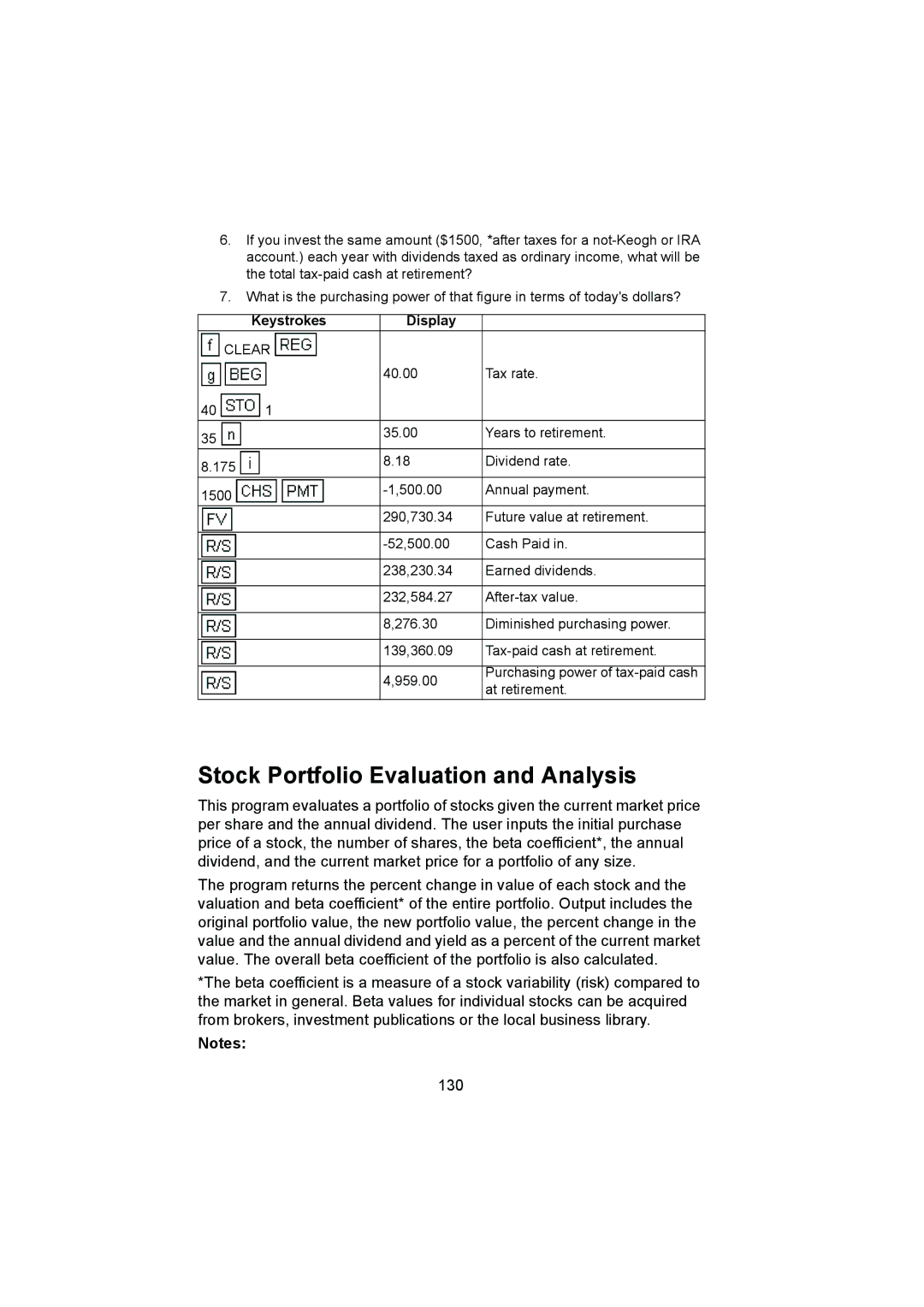
6.If you invest the same amount ($1500, *after taxes for a
7.What is the purchasing power of that figure in terms of today's dollars?
Keystrokes Display
 CLEAR
CLEAR 
| 40.00 | Tax rate. |
40 | 1 |
|
35 | 35.00 | Years to retirement. |
|
| |
8.175 | 8.18 | Dividend rate. |
|
| |
1500 | Annual payment. | |
|
| |
| 290,730.34 | Future value at retirement. |
|
|
|
| Cash Paid in. | |
|
|
|
| 238,230.34 | Earned dividends. |
|
|
|
| 232,584.27 | |
|
|
|
| 8,276.30 | Diminished purchasing power. |
|
|
|
| 139,360.09 | |
|
|
|
| 4,959.00 | Purchasing power of |
| at retirement. | |
|
|
Stock Portfolio Evaluation and Analysis
This program evaluates a portfolio of stocks given the current market price per share and the annual dividend. The user inputs the initial purchase price of a stock, the number of shares, the beta coefficient*, the annual dividend, and the current market price for a portfolio of any size.
The program returns the percent change in value of each stock and the valuation and beta coefficient* of the entire portfolio. Output includes the original portfolio value, the new portfolio value, the percent change in the value and the annual dividend and yield as a percent of the current market value. The overall beta coefficient of the portfolio is also calculated.
*The beta coefficient is a measure of a stock variability (risk) compared to the market in general. Beta values for individual stocks can be acquired from brokers, investment publications or the local business library.
Notes:
130
